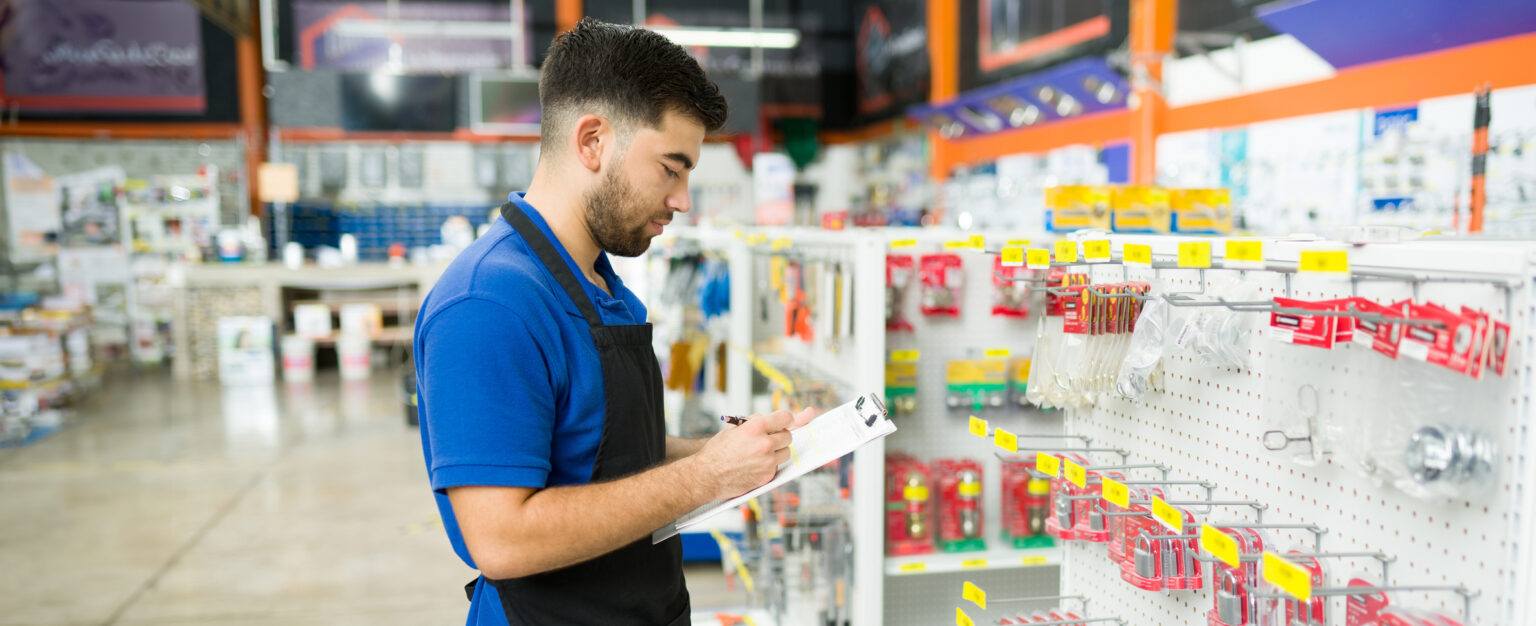5 Types of Shrinkage in Retail: Identification and Prevention Strategies

Retail shrink is an inevitable part of owning and operating a business. As quickly as new technology is developed to curb it, thieves are becoming that much more cunning. Managing it can be an uphill battle without the right tools. If you feel like you’re doing everything you can, but physical inventory continues to fly off the shelf unaccounted for; or if you don’t even know where to get started, we can help. Read more to discover:
- How unanswered theft affects your bottom line.
- How to identify the types of retail shrinkage you may be experiencing.
- Adaptable loss prevention strategies to reduce theft.
How retail shrinkage can affect retail businesses
According to the National Retail Federation, shrink hit a high of $112 billion in 2022, and is only estimated to increase. Rampant theft of goods has a domino effect, creating issues in every step of the supply chain. Most notably, the numbers on your balance sheet won’t quite add up when it’s time to run the numbers, but it can be so much more damaging.
In addition to losing assets, and income from potential sales, businesses will often hike prices to make up for loss, lay off employees to save money, or lock up all of their merchandise. If shoppers are sensitive to price changes, it will create a poor customer experience that can push them to shop elsewhere. Without any customers, well, you know the rest; a store that can’t remain profitable is bound to go belly up.
Calculating retail shrink
In basic terms, it’s the difference between how much you should have from selling products vs. how much you actually made at the end of it all after inventory checks, etc. If there’s a big difference in those numbers, then you may be losing money, fast.
Although it’s often shown in a dollar value, it’s better expressed as a percent using the following formula:
(value of lost goods/value of goods sold) x 100 = %
Example: (10,000/250,000) x 100 = 4%*
*Remember, the goal is always to stay under 1% or as close to it as possible.
Types of Retail Shrinkage
There are a ton of ways retailers can experience inventory loss (inventory shrinkage). Here are 5 of the more common ways.

Shoplifting
Shoplifting is a type of external theft, meaning it’s perpetrated by outside sources (i.e. customers or organized retail crime groups). The National Retail Federation estimates that shoplifting accounts for the most theft at 36%.
You can identify a potential shoplifter by their body language or any unusual behavior. Does a shopper enter in multiple layers of clothing that seem odd for the weather? Are they carrying large bags? Are they refusing help from store associates, but lingering without any clear direction or products in hand? Are they avoiding eye contact? All of these are signs of a potential theft.
Organized retail crime groups, as the name suggests, are more organized in their attempts. They can unknowingly scout a location or chain for weeks. They often take high quantities of merchandise and sell them to pawn shops, on the black market, or resale sites. They can be extremely hard to stop, especially with policies that forbid employees from engaging with thieves.
Loss prevention strategy for shoplifting
Modern solutions to prevent theft include RFID tags, advanced surveillance cameras with AI facial recognition, hiring more security guards, and more. For smaller retail stores, such measures can be very costly and time-consuming. There’s no need to panic. You can start at the product level with retail security display security and sell-thru merchandise security solutions to protect physical inventory.
InVue specializes in innovative asset protection solutions that are easy-to-use, effective, and enhance the customer experience no matter the industry. From health and beauty to grocery and consumer electronics, we have rigorously tested anti-theft devices for your retail store.
Find solutions to fit your store budget and layout and receive insights to enhance the in-store experience. Retail security devices not only protect merchandise, but also associates and customers from potentially dangerous interactions with thieves. They are easily scalable and more reliable than staff or cameras alone.
Employee theft
Employee theft is the opposite of external theft because it is perpetrated by internal sources, your employees. It is a close second in contributing to retail shrink at 29%. It also comes in a variety of forms that you can learn about here.
Without proper access control, it can be difficult to spot signs of internal theft. It pays to do your due diligence up front via the hiring process, and to be vigilant of employees who just don’t seem to enjoy their work or coming in every day.
Loss prevention strategies for employee theft
Your employees are often your first line of defense in identifying theft and preventing shrinkage. Proper staff training is the foundation of a successful business and makes a significant impact on the efficiency of store operations and the shopper’s experience. The difference between a good experience with a brand and an exceptional one is the customer service you provide.
In addition to training, it’s beneficial to promote a positive company culture and provide incentives for great work via an employee discount, bonuses, or other means of appreciation.
If you experience high turnover (like many retailers), or have a lot of employees, investing in proper access control with InVue is the best solution to prevent shrinkage by employees.
Our patented OneKEY solution is effective because it gives you full visibility of what employees are doing in your store. Each employee is given a unique PIN to use with our IR key. Because of this PIN you can see which employees unlocked which products, when, and where. You can also set limitations on which areas employees can access. OneKEY can be used with a majority of InVue solutions, so as you scale your retail business, your security solution can scale with you.
Administrative errors

Administrative errors in the retail industry are also known as paper shrink. They include mislabeling items, accidental markdowns on the wrong products, errors in cycle counts, and data-entry errors. They can be intentional or honest mistakes, but still contribute to inventory loss.
Loss prevention strategies for paper shrink
Some ways to prevent administrative error include proper training, automating tasks where appropriate, having a checks and balances system, and using proper point of sale software.
Vendor fraud

Vendor fraud is a major risk to retailers. It is also known as embezzlement and according to the ACFE, business lose around 5% of their profits to these fraud scams. The goal is to divert money away from your business and send it to a third-party account via payment scams, tampering with checks, wiring money through a shell company, or employees receiving incentives from a vendor for information.
These scams can be very intricate and can go on unnoticed for an extended period of time. For example, sending duplicate payments is a form of vendor fraud, but in most instances, it is genuinely just human error. If it’s happening often, it is definitely something to look into more closely.
Loss prevention strategies for vendor fraud
To prevent vendor fraud, it is best to properly vet all new vendors. If their contact information is vague or hard to find, it’s a sign they may not be reputable. Closely study invoices and their numbering to ensure they follow a pattern. Does the vendor request payments in unusual ways that are difficult to track? Are all invoices only in whole dollar amounts?
Internally, it is important to implement checks and balances among employees tasked with managing inventory, money, invoices, and other sensitive documents. Remember to always do routine check of your balance sheet so you spot any issues before it turns into something major.
Fraudulent returns

According to the NRF, retailers experiences nearly $750 million in returns in 2023. For every $100 of returned items over $13 was fraudulent. Fake returns result in significant inventory losses and come in a variety of forms including; falsely claiming an item is defective, using fake receipts, returning stolen goods, returning empty boxes, claiming that you did not authorize a certain purchase, falsely claiming damage during shipping, and more.
Loss prevention strategies for fraudulent returns
If your initial solution is to create a strict return policy, you may want to think again. Having lenient return policies is important to many shoppers and can help you remain competitive. It’s important to do your due diligence up front.
For example, if you sell online, make sure products are photographed and described in great detail. For brick-and-mortar locations the best way to limit fraud is through top-tier customer assistance and a seamless in-store experience.
Make sure staff are greeting customers and offering assistance. John is less likely to return a device if an associate shows him all of the features and explains how to use it before he heads to the register. Also, if a customer is planning on purchasing a lot of items with the intent to commit return fraud, they likely won’t under the watchful and helpful eye of employees.
There are also more advanced solutions like return merchandise authorization systems (RMAs) that track return patterns to prevent fraudulent returns before they happen, but they aren’t 100% and add a lot of friction to the customer experience. It’s up to you as a retailer what you need and can afford.
Embrace the next wave in retail security with InVue
As we address challenges such as employee theft, human error, or the increasing threat of organized crime, we have shared insights on how to identify these issues and implement effective solutions. The cornerstone of any effective security strategy is to maintain a frictionless and enjoyable in-store experience for consumers. With InVue, you benefit from a dual approach that expertly balances a seamless consumer experience with robust asset protection. While we may not claim expertise in every area, we are your definitive experts in retail security, committed to safeguarding your interests with innovation and integrity.
Contact us today to get solutions that prevent shrinkage and increase sales.